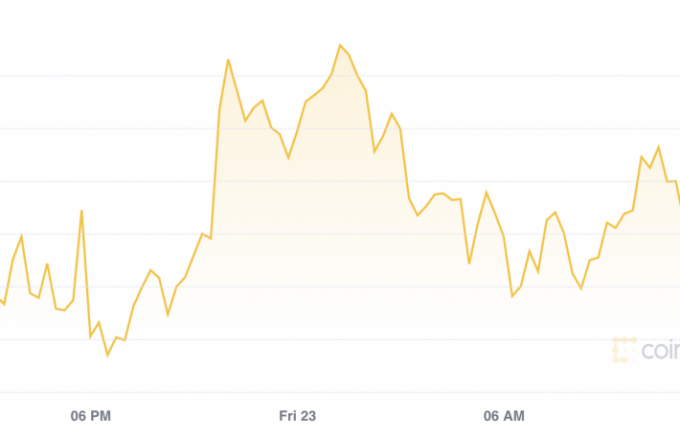By analyzing trading activity on centralized exchanges from different days and time zones, blockchain data firm Kaiko found that on Coinbase, Gemini and Kraken, the ratio between the volume of weekend and weekly BTC/USD trading doubled from March 2020. This finding showed that the average weekend bitcoin (BTC, +1.31%) trading volume is growing relative to the average weekday volume on the three exchanges that are more popular among users in the West.
Meanwhile, as the chart below shows, the ratio of the BTC/USDT pair on crypto-to-cyrpto exchanges Binance, Huobi and OKEx has remained at around 1 in weekday and weekend volume over the past year. The three exchanges represent the power of retail investors in East Asia, especially in China.
On the derivatives market, Kaiko saw that, on an hourly basis, trading volume for bitcoin perpetual futures contracts on Binance and FTX, the two biggest derivatives exchanges, surged around 16:00 UTC. The peak trading time on the two exchanges overlaps between European and U.S. trading hours, suggesting that European Union and U.S. jurisdictions have become “extremely” significant for global crypto exchanges.
“With China cracking down on crypto trading and businesses, a lot of the volume has shifted to North America in the last 12 months,” said Kevin Kang, founding principal of U.S.-based quant hedge fund BKCoin Capital.
Kaiko’s report also show that while the crypto community has focused on the growing presence of institutional investors, it may have underestimated an increase in retail investors.
“This trend conflicts with bitcoin’s institutional narrative as it supposes that retail participation is increasing,” Dessislava Aubert, research analyst at Kaiko, told CoinDesk.
TradFi playing a role
Kaiko’s findings also highlight how investors from traditional finance may have played a role in changing trading behaviors, according to market observers.
Rising weekend trading volume could be partly attributed to automated trading tools that can move some trading activities to weekends, according to Kaiko. Traders who usually conduct large-volume transactions may choose to split their orders into smaller sizes over a longer period of time to “minimize the execution costs and price impact,” Kaiko said.
“As more traditional market makers and quant shops [are] coming into the [crypto] space, we see higher liquidity on weekends than we saw in the past,” Kang said.
Joel Kruger, cryptocurrency strategist at institutional crypto exchange LMAX Digital, told CoinDesk that the trading volume in the past weekend at LMAX Digital was up by 85% from the weekend before, as institutional investors tracked the hotly debated $28 billion tax reporting provision of the $1 trillion U.S. infrastructure bill.
“We’re definitely seeing institutional players taking advantage of the 24-7 access to markets,” Kruger said. “This means being able to react to developments as they’re happening as opposed to being stuck in a position and needing to wait for the market to open up on Monday.”





